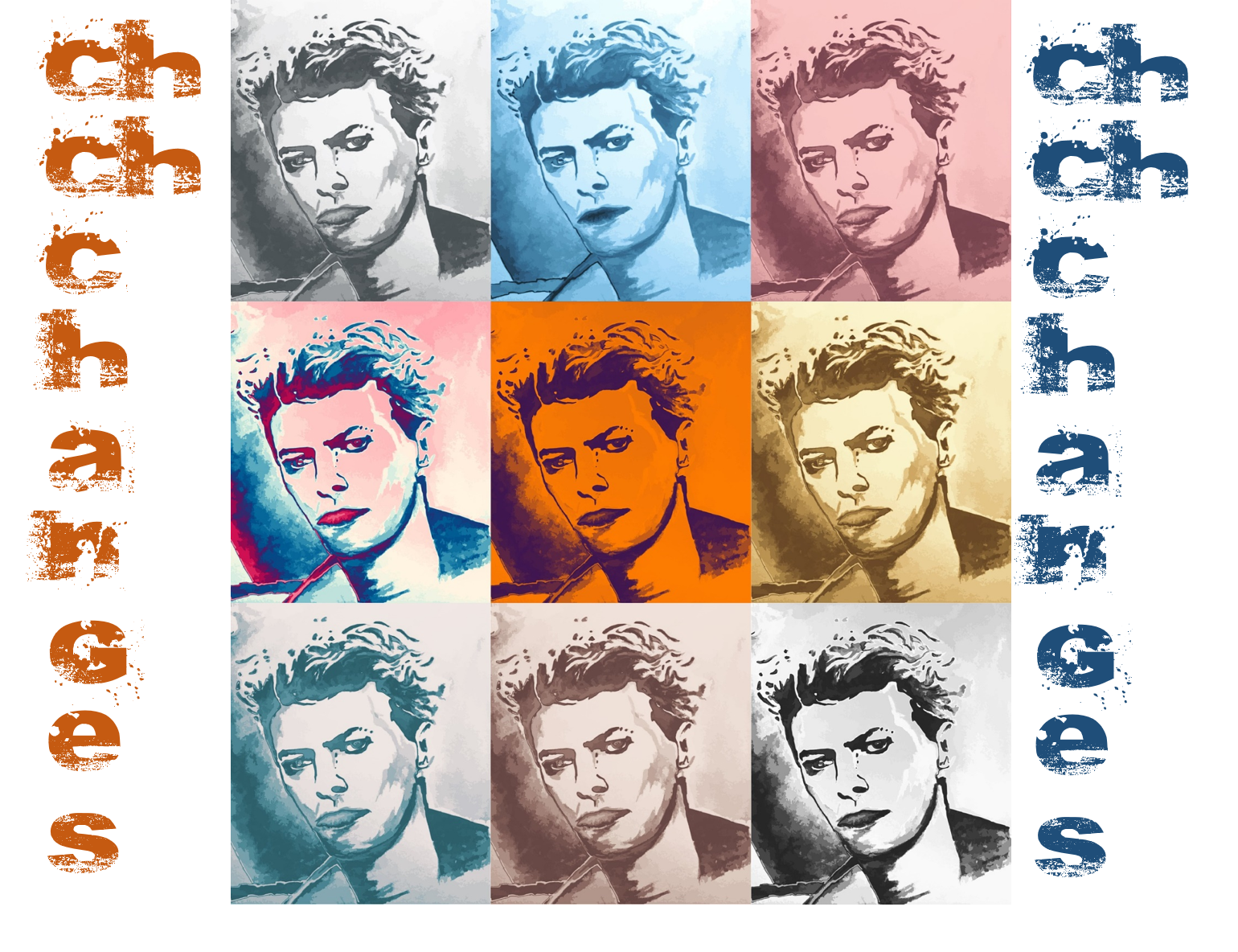
I’m one of those people who get “ear worms” – a lot. Without fail, I almost always wake up with a song playing in my head, often for no apparent reason. Most of the time, they are obscure and old, usually having nothing to do with what’s going on.
But over the last several days, the song reverberating in my head – in fact, the lyric – is from David Bowie’s “Changes:”
“Turn and face the strange ch-ch-changes.”
And I know very well why that’s the tune my brain keeps cueing up.
We are living in very strange times. Eric Yuan, CEO of Zoom – perhaps the one brand that has benefited most from COVID-19 – noted last week that we’re living a “once in a probably 100 years crisis.”
That’s why if anybody understood the concept of change, it was the late, great David Bowie. His art would very likely have thrived during an event of this magnitude because he didn’t just embrace change, he designed, perfected and engineered it. Throughout his influential career, Bowie lived for changing it up – his appearance, his style, his personas, his music. It was almost as if the artist couldn’t fathom the thought that his art would ever be thought of as static or predictable.
If there was a voice that inspired us to face the changes, it was Bowie’s, perhaps one of the original “change agents.”
Many observers mark March 11 as the date when the COVID-19 change took over our lives. Only seven weeks ago, it was the day Tom Hanks and his wife, Rita Wilson, announced they both tested positive for the virus, COVID-19 cases in the U.S. broke the 1,000 milestone, the WHO declared the coronavirus a “global pandemic,” the NBA put its season on hold, and President Trump gave one of those rare addresses from the Oval Office.
Over the past few weeks, COVID-19 has been all about change in a short span of time. As the story has unfolded, we are becoming uncomfortably accustomed to the roller coaster of constant change.
Pretty much every brand is experiencing the queasiness – some more than others. The Las Vegas strip is a great example of an entire metro – in fact, 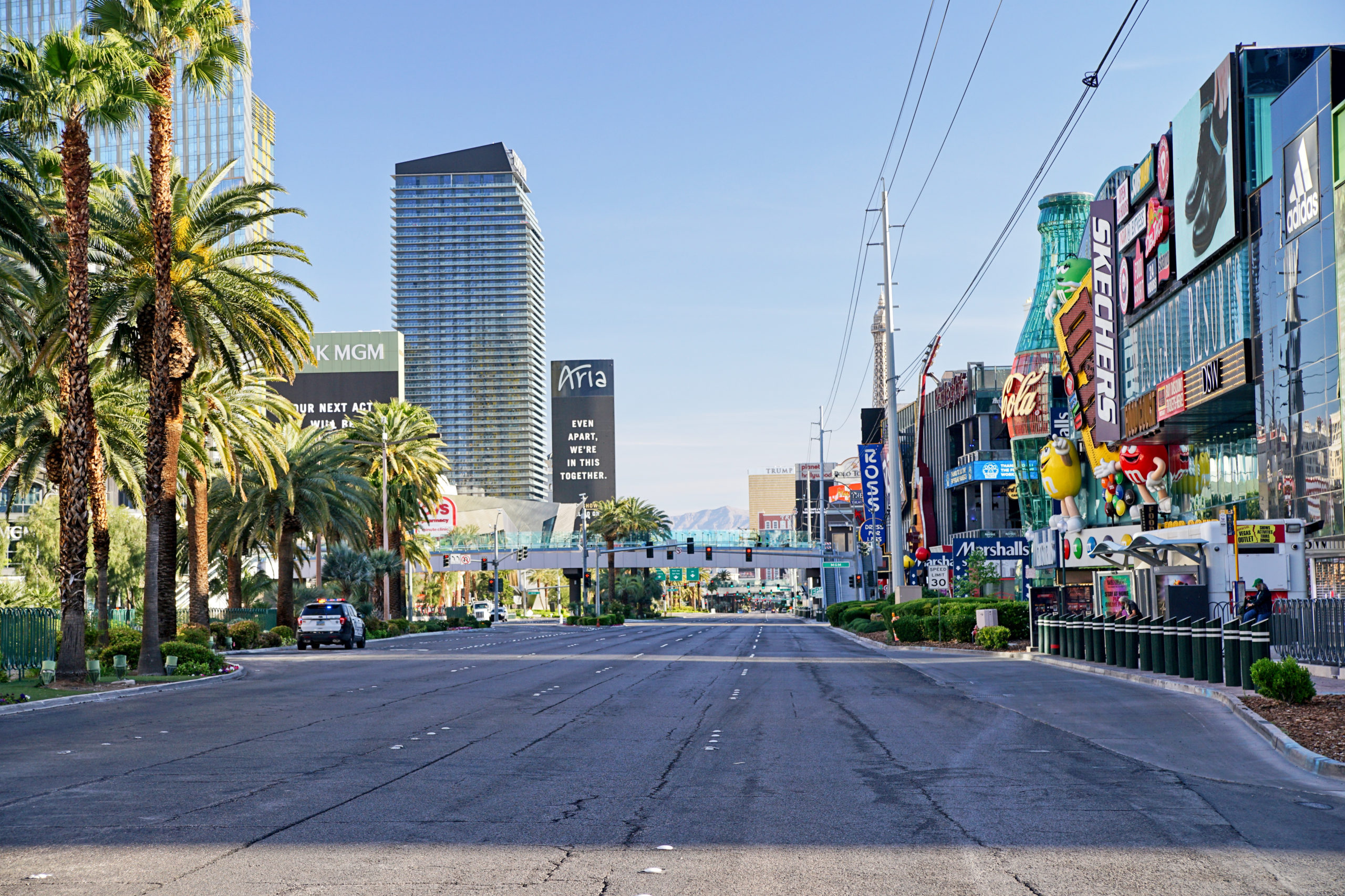 the whole state of Nevada – being radically impacted by the closures because of its singular focus on tourism and gaming.
the whole state of Nevada – being radically impacted by the closures because of its singular focus on tourism and gaming.
Going to Vegas is a highly social experience – just the kind of environment that runs 180° counter to wearing masks, social distancing, and working from home. Vegas is about touching – slots, cards, chips – all the things that can get you in trouble in our virus-obsessed world.
For most people, visiting “Sin City” means you have to get on an airplane just to get there. And then there are the problems posed by staying in a casino hotel – the crowds, the gaming tables, the shows, the sports book, the restaurants. Want to indulge in the buffet right now? Probably not.
Not to mention all those conventions that are staples in Vegas, from CES to the NAB, for those of us in the radio business. Casino owners and the city’s politicos will have a lot of changes to make to even begin the process of re-establishing Vegas as an entertainment mecca.
Not every brand or platform is facing that level of disruption and upheaval, but the truly smart ones are taking the opportunity to reassess their business models now, and to make appropriate changes – some of which are difficult because of tradition, and the way human and financial resources have been historically deployed.
That’s why a brand assessment right now is so important. Our company has started doing COVID-19 assessments – a 10-point diagnostic evaluation of radio station’s air sound and on-line assets. Part of that process is asking two key questions:
- What are you doing that no longer makes sense?
- What should you be doing more of that is new and different?
The truly smart, introspective content teams and media organizations are asking these somewhat painful questions. They are especially challenging because of stretched staffs, diminished funds, and the overall stress in the air, 24/7. Nonetheless, these questions need to be asked, and the smartest media brands are engaged in this process.
The New York Times is a good example. Their most recent decision? They’ve put the brakes on two editorial sections that have been mainstays in their Sunday print edition:
Travel and sports
Both of these editorial stalwarts are obviously victims of the virus. First and foremost, no one’s traveling, much less taking vacations. And as we are well aware, the world of sports has been decimated by cancellations and postponements. Neither of these sections has a whole lot of resonance in the new world invaded by COVID-19. Yet, inertia and economics suggest they continue to exist, even though their readership and value has been greatly diminished by the ch-ch-changes.
Executive editor, Dean Bacquet, told Forbes the pandemic has “caused us to rethink the way we produce traditional elements of the news report and, in particular, the structure of the print newspaper.”
To their credit, the Times isn’t just eliminating this content – they’re rethinking what their readers want and need, from the standpoints of both information and entertainment in the midst of the COVID-19 outbreak. Instead of a travel section, the team has reimagined this content, now called “At Home.”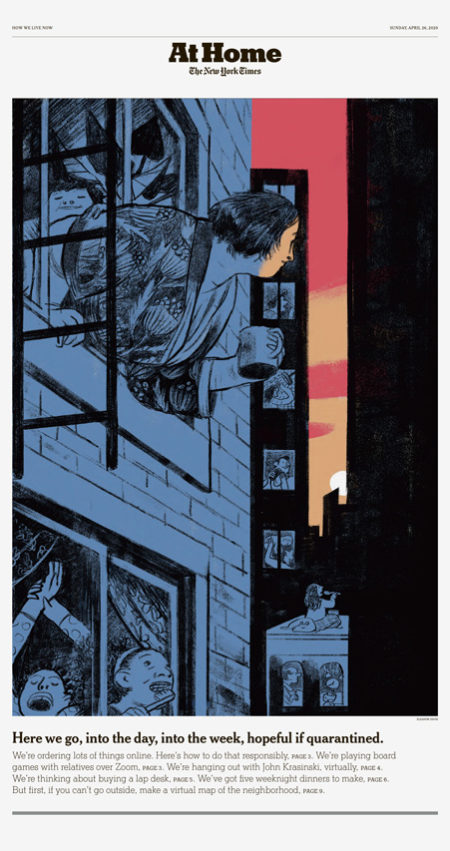
The new section is all about how our lives have been transformed in our homes, apartments, condos, and dormitories. “At Home” is mostly about what is known as “service journalism” – a focus on practical content focusing on meals, games, virtual pursuits and resources, and beauty tips – not exactly in the “Gray Lady’s” sweet spot.
As the Times noted, “These pages are devoted to the belief that we can enrich our lives even while staying at home and maintaining our proper social distance from one another during the coronavirus pandemic.”
In the first edition, I saw articles with these headlines:
“Make It Through Math” – yes, a story about home schooling and dealing with homework and assignments.
“Sink A Battleship, Buy the Railroad Via Zoom” – a story about classic games we can play with others who are also sheltering at home.
“Get Your Medicine Cabinet Ready” – how to prepare for the possibility of actually getting COVID-19, and what you should have on hand.
These are all stories that are well out of the Times’ comfort zone – but that’s what the situation now requires. And they made this pivot quickly – it took just 10 days to make the transition.
According to AdWeek, this amazingly quick turn underscores how important it is for established brands to reassess their core products, replace features and benchmarks that have lost relevance, and pivot to create new content more germane to the situation.
That doesn’t mean they won’t come back. While Baquet doesn’t confirm it, there’s no question that once we start planning vacations and business trips again, and when there are players occupying a diamond, a court, a gridiron, or the ice, these two editorial staples will triumphantly return to the Times’ content menu.
Until then, COVID-19 has rendered them both out-of-sync with the times.
Why does this matter to radio?
Many stations have their versions of the “Travel” section – content that has been on the air for decades that may no longer resonate in these harrowing times. Whether we’re talking commercial radio or public radio, there is often content and features that simply sound off-key now.
A case in point are all those traffic reports, whether they’re part of an all-news clock or they’re ingrained in a music station’s drive time dayparts. Now, of course, part of the stumbling block of either cutting back or excising them all together is the loss of revenue that’s tacked onto these features. Most of the time, these reports carry sponsorships and ad inventory, making it difficult to simply shove them aside, reduce them, or cut them altogether.
And yet, carrying multiple traffic reports an hour – even in markets like D.C., New York, and L.A. – lacks relevance and suggests a local radio station not in touch with what’s happening in these changing times.
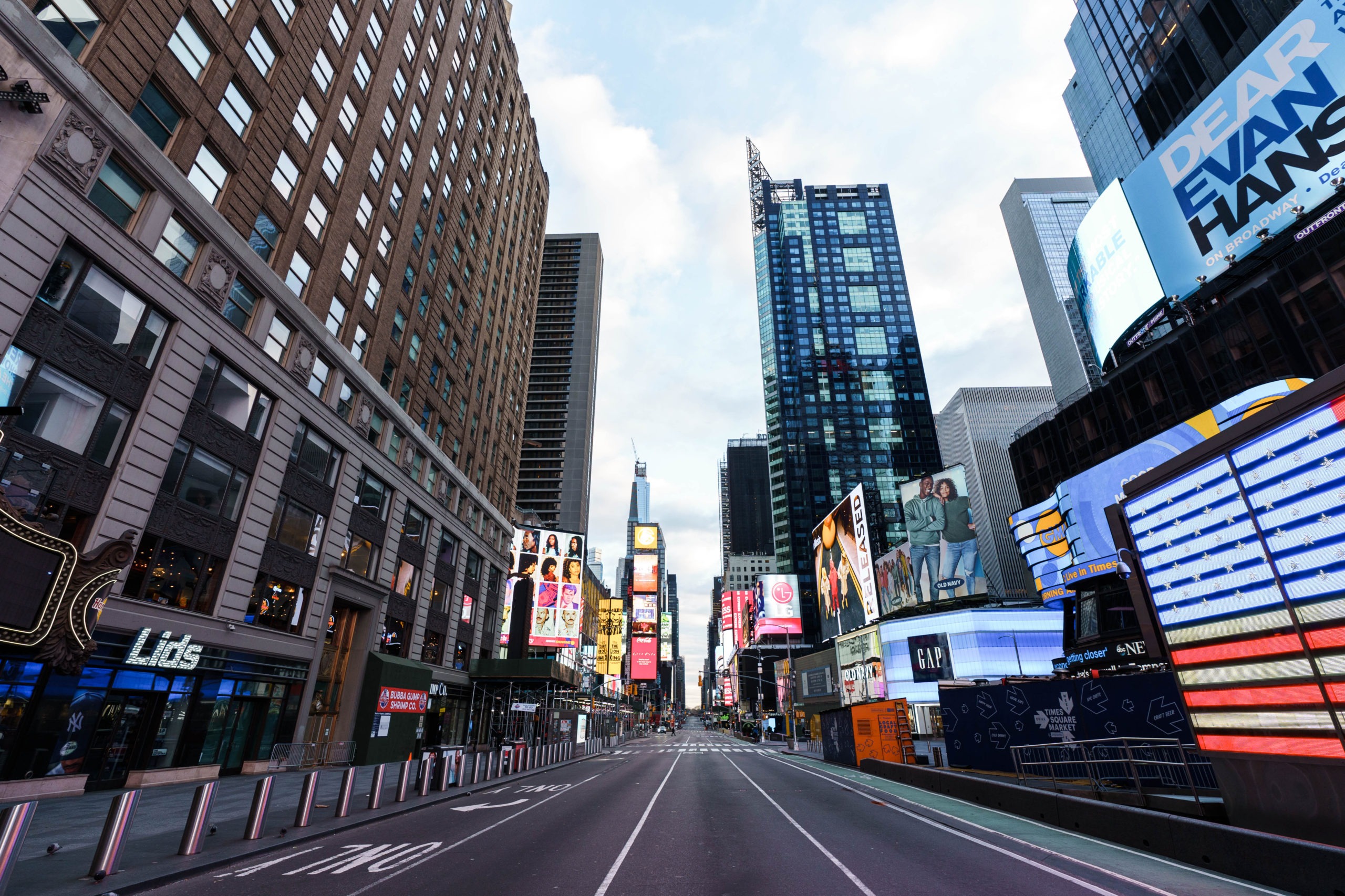 Painful as it may be, it’s a matter of inventorying the on-air, online, mobile, social content a station airs and publishes that just doesn’t make much sense right now.
Painful as it may be, it’s a matter of inventorying the on-air, online, mobile, social content a station airs and publishes that just doesn’t make much sense right now.
Take concerts, for example. Mavens in the events space are predicting it may not be until well into 2021 before it will be safe to attend big shows, much less festivals like Lollapalooza or SXSW. Yet, many radio Concert Calendars on station websites are prominently displayed, or worse, haven’t been updated, even though most shows have been cancelled or postponed.
In many cases, the website nav bar hasn’t changed one iota, nor have calls to action on websites that no longer look normal been removed.
Oftentimes, on-air production elements are essentially the same today as they were in February – a lifetime ago. Too many stations haven’t adjusted their production or positioning to address the changing mood of the audience, the market, and the metro.
Social media execution can be very spotty. For every station acknowledging first responders and local frontline workers, others aren’t in the moment 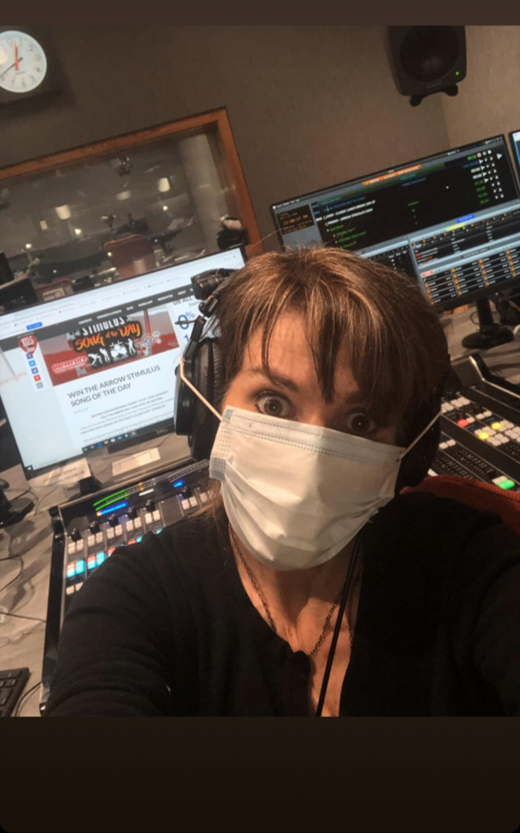 at all. Yes, escapism is part of what many radio stations are about, and social media is a playground littered with memes, jokes, and other silliness. But tone is a key part of maintaining relevancy during the pandemic, and social media is a reflection of what a radio station is all about.
at all. Yes, escapism is part of what many radio stations are about, and social media is a playground littered with memes, jokes, and other silliness. But tone is a key part of maintaining relevancy during the pandemic, and social media is a reflection of what a radio station is all about.
It’s not always easy to nail a moment with a photo or a post. But that’s the task at hand – reminding the audience a station or a personality empathizes, “gets it,” is in the moment, and is sharing the experience of COVID-19 in a communal, relatable way.
And it’s more than just addition through subtraction. While perhaps some elements should be shelved until the crisis abates what can local radio do to better serve its audiences through this difficult time? What content can actually be added to the mix – both on-air and digital that can enhance your station during this trying time?
It’s about putting the station’s content menu on the table, and assessing which elements continue to work, and which ones might be better off on the cutting room floor – at least for now.
Rolling with the changes is part of how radio brands evolve, find new voices, and learn new ways to connect with listeners. It’s not always an easy process, but it’s a healthy one.
And to quote David Bowie:
“I feel confident imposing change on myself. It’s a lot more fun progressing than looking back. That’s why I need to throw curve balls.”
- Like A Pair Of Old Jeans - April 2, 2025
- What’s Fair Is Fair - April 1, 2025
- What’s On Your Bucket List? - March 31, 2025




Pivoting from one moment in time to another is one of the hardest thing a brand does. When do you pull your marketing strategy down, retool and make your approach more reflective of times? How long do you do that for and when do you ease back to some level of what you were doing before? Brands, like states are asking these questions daily and the answers vary depending on how each brand is positioned. Recent data is suggesting that consumers are looking for brands (like their stations) to begin returning to more “value conscious” messaging. Have we moved from “We understand and are sensitive” to “Here’s our value proposition for you in these times”? Tough but important questions.
Every brand needs to put those on the table and use the best data to determine their course. Maybe more than in any previous time in history knowing when to change and how to change are decisions that will either propel a business or stop them in their tracks.
Jon, I’m down with all of that. As difficult as it may be, COVID-19 affords us that uncomfortable pause when we can put it all out there, and decides what level of change we need to make. And that doesn’t mean these changes or pivots are permanent. But flexible, agile brands have the ability to call those all-important audibles quickly and efficiently. Thanks for the comment.
Same sad but sobering facts about radio. It responds to every crisis by firing people and has undoubtedly began that process already. Many of the people that would have updated websites and talked to traffic report sponsors about more effective ways to use radio til things are more normal are probably trying to log onto their states unemployment sites and wondering how they’re going to afford COBRA.
The 2008 crash cost radio 1/3 of its revenue and it never came back, so a whole lot of people were fired and those jobs were eliminated. This situation looks to be at least as bad, so the number that was once north of $20 billion will likely be well south of $10 billion. Unless something atypical is done, that will probably spell the end of most remaining live talent, make research a part of history and leave each company with one centralized version of every format with some local references messaged to whoever tracks a particular show from the hub studio. Many, maybe most markets will have more stations in their clusters than employees.
Can radio continue to fake the local thing at this level and survive? I think we’re going to find out.
Bob, this is as dystopian a view of radio as I’ve seen – even from you. And I think for pockets of the radio industry, it has the sad ring of truth. My hope – and I’ve heard this since COVID-19 became the only thing that we’re talking about – is that more stations step up during this time. Some have acquitted themselves well, and hopefully, the lessons from this outbreak will affirm the brands that came out stronger embraced live & local. We will see.
I agree – some stations have really stepped up and should be cited and commended. Long term for the industry…sadly, do the math
Great read. Thanks Fred. I’ve also had many conversations regarding the fact more people who might have been technology challenged, are now learning to use new devices, apps and products that they may not have used before due to their age or just time to learn a new medium (roku, Netflix, Spotify, etc.)…Do you have any insight on that?
The data I have is from trended Techsurveys showing Boomers are catching up (to some extent) with their kids. Thanks in large part to grandchildren, many have embraced platforms like Facetime, texting, and Netflix. I’m thinking COVID-19 is accelerating that. Good to hear from you, Mike.
I just finished an amazing book, “David Bowie- The Oral History” by Dylan Jones. As noted in your open, Bowie’s chameleon nature along with his short attention span when it came to his art, was perfect timing for today’s blog. One of your best, Fred.
The late Jack Welch, former Chairman and CEO of General Electric said it best- “change before you have to”
I’m inspired by those stations and programmers taking intelligent risks by creating a content culture reflective of the times yet remaining in synch with the spirit of their respective brands.
Sadly, I also hear stations lumbering along as if nothing happened.
Disruption fuels opportunity revealing creative and nimble thinkers who’ll come out of this stronger and better positioned to provide their employer with a competitive edge.
Fred, I know you’re a baseball fan so remember what Yogi Berra said- “the future ain’t what it used to be”
Stay well.
Great comment, Scott. I especially love the Jack Welch quote, but Yogi’s most definitely stands the test of time. Appreciate the kind words, Scott.